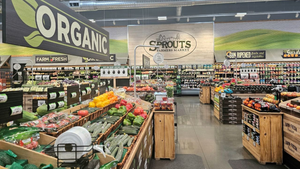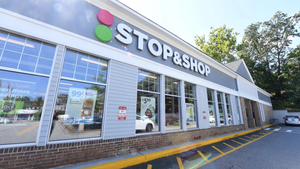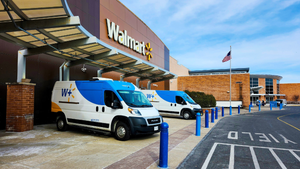BUILDING A BRIDGEBUILDING A BRIDGE
By integrating supply-chain systems with other corporate-wide applications, ranging from accounting to human resources to sales data, retailers can reap the rewards of up-to-date information flowing throughout the organization.The Internet has started to play a vital role in the way retailers and wholesalers view their current business model from the manufacturer's door to the retailer's shelf.Some
October 11, 1999
PATRICK SCIACCA
By integrating supply-chain systems with other corporate-wide applications, ranging from accounting to human resources to sales data, retailers can reap the rewards of up-to-date information flowing throughout the organization.
The Internet has started to play a vital role in the way retailers and wholesalers view their current business model from the manufacturer's door to the retailer's shelf.
Some retailers are using data warehouses to share vital item information and better move product through the supply chain, while others are using best-of-breed systems within a company in an effort to put all the necessary parties on the same page.
Supermarket industry experts told SN there are no hard-and-fast rules about how to best integrate the supply chain with other corporate systems. But most agree that by having real-time supply-chain information on item promotions, item movement and inventory, better overall business decisions can be made.
The following are comments from leading retailers on the effect that integrating the supply chain could have on the supermarket business. Integrating the supply chain can save money and improve customer service, among other benefits, they said.
We have an operational data warehouse that we are learning to get maximum utilization from. The data warehouse is simply a collection of all item movement through the stores. We are making it available to category managers and our price people. Prior to the data warehouse, they didn't have access to [item movement at the front end]. The information came from the distribution center. It was a push instead of a pull. Now, they have more updated information and get better utilization
We can anticipate our needs a whole lot better and it also gives us a better handle on our frequent-shopper program. The data warehouse monitors item movement at store level through the checkout. We want to know what's going out the door. All the information is brought in daily, but we are not [currently] getting maximum utilization out of it, we are learning to use it.
We started bringing the data in late fourth quarter [last year] and we have less then 53 weeks [of] movement in the data warehouse.
When we start into January 2000, we will have last January's sales data. In the meantime, we know what's flowing and should get more utilization out of the data warehouse. We're also doing quite a lot with our front-end and our frequent-shopper card. We've had to change out a lot of equipment.
The integration of systems and the availability of consumer data are going to increase over the next several years. It's going to emerge as a whole different supply chain. I think it will transform the supply chain into a much faster supply chain with fewer transactions and more consumer focus. Look at scan-based trading as an example and think about what that really means.
That's where a company that sells goods and another company that has a place to sell goods can align themselves. What's the measure of success? By definition, a sale. When that sale happens, money changes hands and both parties are focusing on the same outcome with no hidden agenda. Today the technologies aren't fully developed and trading partners aren't aligned with a focus on a common objective. Inventory-based income sources don't exist in this model.
[Swoboda noted that the average grocery industry inventory is about 16 to 21 days as opposed to some other industries where the supply chain is measured in hours.]
Today, it's probably 40% technology and 60% trade-promotion deals, with marketing merchandising affecting the integration of the supply chain. It will probably never go away, but there are probably better ways to predict inventory flow. Look at that scan-based model. Things can change fairly dramatically. Think about having real-time access to inventory levels everywhere.
With consumer demand data, there is a big payback. Synchronizing data is also a piece of the puzzle. The thing that hasn't materialized is sophisticated integration software. When all those pieces come together at one time and one place, then a lot of these benefits can be realized.
Most of our systems have been highly integrated for a long time. That's pretty common for most retailers. I guess we, like a lot of other companies, are taking the best-of-breed architecture and implementing it. Enterprise resource planning systems are expensive and inflexible.
By the same token, best-of-breed makes it pretty easy to integrate. ERP would suggest then that you have software that can handle every problem a retailer has, and I don't see that. There's too much complexity in abundance to get your arms around every aspect of it. I think there is always room for best-of-breed and some of the things we do here.
It's always a cost benefit to do it in-house. We like to think of ourselves as systems integrators. We have a new front-end system that is integrated and can communicate, pull back daily point-of-sale data and now do more efficient replenishment. The front-end system was just completed this past spring. It took a couple of years to do it. With best-of-breed you keep improving the parts, but with ERP, you make a version upgrade. You have to change everything simultaneously.
It's monstrous. I can't imagine changing order entry and purchasing all at once. A closed-loop and fully integrated system is good but is just difficult.
About the Author
You May Also Like
.webp?width=300&auto=webp&quality=80&disable=upscale)



